From shape-shifting selkies to mysterious loch dwelling monsters, Scotland’s folklore is woven into its places, landscapes and stories.
Discover my favourite Scottish myths and legends, from water spirits to fairies and the places they inhabit with my guide to how to visit them.
My favourite 10 Scottish myths and legends to visit
- The Loch Ness Monster – otherwise known as Nessie, maybe the most famous of Scottish myths – or legends. Today, Nessie is a superstar and you can head out on a boat trip on the loch to try and spot her.
- The Kelpies, Falkirk – Scotland’s Kelpies are shapeshifting water spirits, said to look like horses. The Kelpies are celebrated at The Helix Park with the largest equine sculptures in the world.
- The Blue Men of the Minch, Outer Hebrides – known as Storm Kelpies, the Blue Men are said to inhabit the strait as you take the ferry between Ullapool and Stornoway on the Isle of Lewis. The Blue Men are said to cause the storms which often frequent The Minch – driving unwary sailors to their death.
- Fingal’s Cave, Staffa Island – famed for its hexagonal basalt columns and natural acoustics, folklore connects the cave to the Irish giant Finn McCool, hero of the Giant’s Causeway legend, who supposedly built a bridge of stepping stones across the sea to Scotland.
- The Old Man of Storr, Isle of Skye – a dramatic 50-metre pinnacle of rock formed by ancient landslides on the Trotternish Ridge. Folklore says the “Old Man” was a giant turned to stone, either by the sun’s rays or in grief after burying his wife.
- The Green Lochan, Cairngorms – deep in the heart of the ancient Glenmore Forest and surrounded by huge Caledonian pines is the beautiful Lochan Uaine – where it is said the waters get their green hue from the local fairies washing their clothes in it.
- The Cailleach Bheur, Schiehallion – the most ‘mystical’ of all the Scottish Munros – its name means ‘Fairy Hill of the Caledonians’ and is said to be home to the Cailleach Bheur or ‘the Queen of Winter’.
- The Big Grey Man of Ben Macdui – said to haunt the Cairngorms’ highest peak, Ben Macdui, descriptions of the Am Fear Liath Mòr vary from a tall, shadowy giant to an eerie presence.
- Fairy Pools and Fairy Glen, Isle of Skye – it is no wonder the mystical Isle of Skye is home to tales of fairies and the places they inhabit. Two of the most famous are the Fairy Pools and Fairy Glen, now both incredibly popular tourist attractions.
- Doon Hill, Aberfoyle – legend has it that in revenge for his book about fairies, a local Reverend was kidnapped by the fae folk, entrapping him in a Scot’s Pine at the top of the hill to become the Chaplain to the Fairy Queen.
Read on to find out how to visit these myths and legends in Scotland!
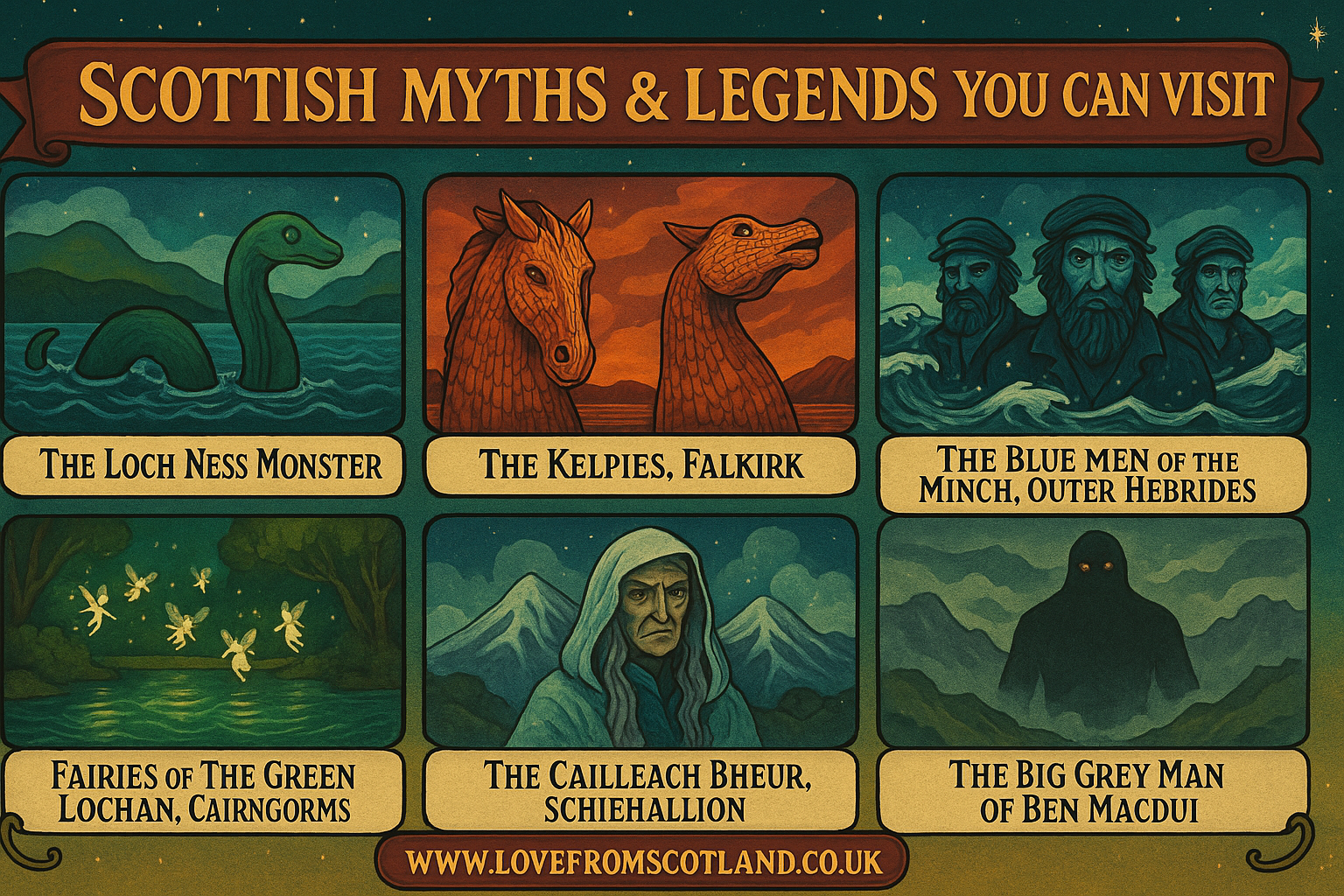
1. The Loch Ness Monster – Loch Ness, Highlands
Meet Scotland’s Loch Ness Monster, otherwise known as Nessie, maybe the most famous of Scottish myths – or legends.
Sightings of a huge, long necked and hump backed creature in Loch Ness reach back to the 6th century when St Columba (yes, the same saint who founded Iona Abbey) came across a group of Picts who were burying a man killed by a monster in the River Ness.
The most famous sighting of the monster was in 1933 when Aldie Mackay spotted a whale sized creature rolling in the loch. The sighting was published in the local press – and was the first time the word ‘monster’ was used.
Today, Nessie is a superstar and you can head out on the loch to try and spot her.
How to spot the Loch Ness Monster
- Take a Cruise Loch Ness boat tour from Fort Augustus or from Clansman Harbour or from the Loch Ness Centre.
- Why not explore Loch Ness by Kayak – if you dare!
- Visit the Loch Ness Centre at Drumnadrochit to find out all about the legend of the Loch Ness Monster including a 1-hour cinematic experience.
- For the best views of Loch Ness head to Urquhart Castle.
Did you know? Steve Feltham who has been resident on the shore at Dores since 1991, mounting a one-man permanent search for the famous monster.
> Read more: How to explore Loch Ness.
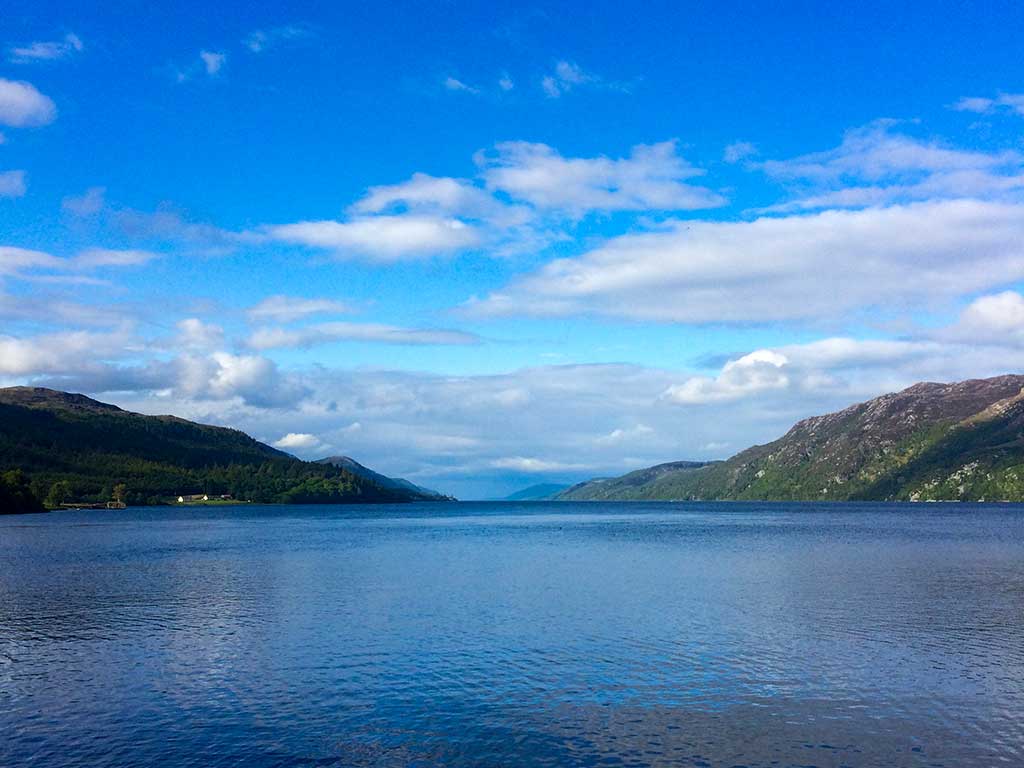
2. The Kelpies – Falkirk
Kelpies are mythical sea beasts, shapeshifting water spirits which inhabit our rivers and watercourses. Have you found one wandering the paths looking out for weary travellers to help safely along their way?
Watch out, for to ride a Kelpie would see sudden death, for they aim to drag you back into the river with them. They possess the power and strength of a hundred horses, and a tamed Kelpie is a wondrous thing. Get a bridle on one and they’ll be your loyal servant forever.
How to visit The Kelpies
- Scotland’s Kelpies are celebrated at The Helix Park between Falkirk and Grangemouth with the largest equine sculptures in the world. Visit the Kelpies at Helix Park.
- Take a 1-day tour from Edinburgh to visit the Kelpies.
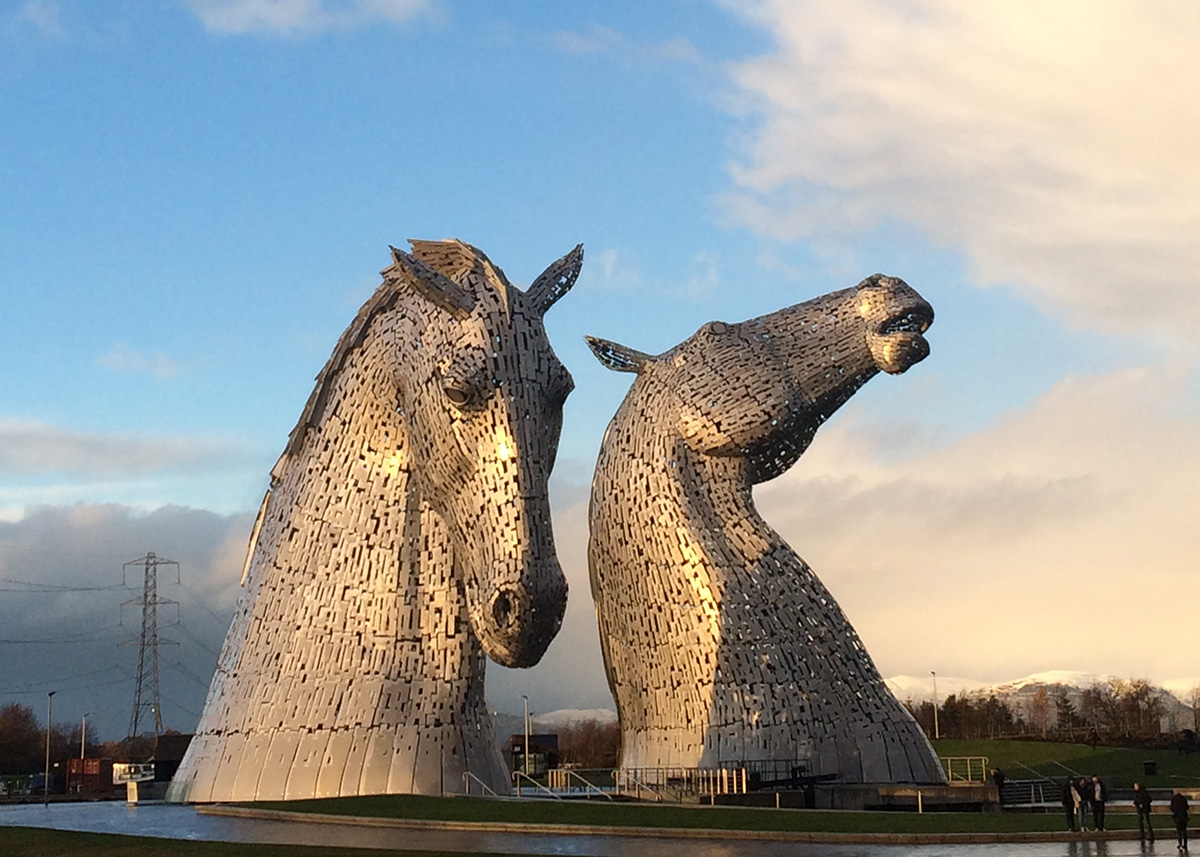
3. The Blue Men of the Minch, Outer Hebrides
Otherwise known as Storm Kelpies, the Blue Men of the Minch are said to inhabit the strait between Ullapool and Stornoway on the Isle of Lewis.
Often see bobbing on the surface, the blue men have human like forms, blue-skin, grey faces and green-white beards. The Blue Men are said to cause the storms which often frequent The Minch – driving unwary sailors to their death.
It is said that the only way to stop the Blue Men of the Minch iis to compete with them in a lyrical battle with their leader ‘Shony’.
A challenge will be raised – they will shout two lines of a verse, which you have to complete. If you win, you’ll be saved from a watery death.
> How to visit the Outer Hebrides
More places to discover Selkies, Kelpies and sea-monsters in Scotland
With thousands of miles of coastline and lochs, it’s no wonder that many of Scotland’s myths and legends relate to the water.
Whether the stories of Scotland’s monsters, selkies and kelpies were made up to scare children away from the water, or are rooted in reality, here iare more of my favourite folklores in Scotland:
- The Kelpie of Loch Garve, Strathpeffer – a particularly nasty shape-shifting water spirit said to lure victims to their doom in Scotland’s canals, waterways and rivers, this kelpie comes complete with a fabulous tale of a stonemason building a fireplace and chimney under a loch.
- Each-Uisge, Loch Treig, Lochaber – inhabiting Scotland’s lochs are Each-Uisge or water horses, with one of the most famous living in Loch Treig in Lochaber. Did you know that Loch Eigheach at Rannoch Moor means “Horse Loch”?
- The Selkies of Orkney – the tale of the Selkie Wife in Orkney is one of my favourites about Scotland’s shapeshifting seals, otherwise known as Selkies. Like mermaids, Selkies can shed their skin and become human – taking the hearts of anyone who meets them, but always eventually returning to the waves.
- Morag of Loch Morar, Arisaig – hidden in the depths of Loch Morar, Lochaber is another loch dwelling monster and probably the most famous after Nessie – and there have been muliple sighting over the years.
- Bean Nighe, the Hebridean Islands – also known as the Washerwoman or Washer at the FordI, a Bean Nighe is said to appear when someone is close to death – often seen washing blood from clothes. They are closely connected to the islands – clans on Mull, Tiree and Skye and Islay reported sightings.
- The Boobrie, Lochs of the West Coast of Scotland – another shapeshifting spirit, the Boobrie takes the shape of a giant water bird such as a cormorant, but most likely sightings of a Boobrie with its achingly loud call were Great Auks. Boobrie’s are said to be native to the lochs of the West Coast of Scotland including Loch Awe, Argyll.
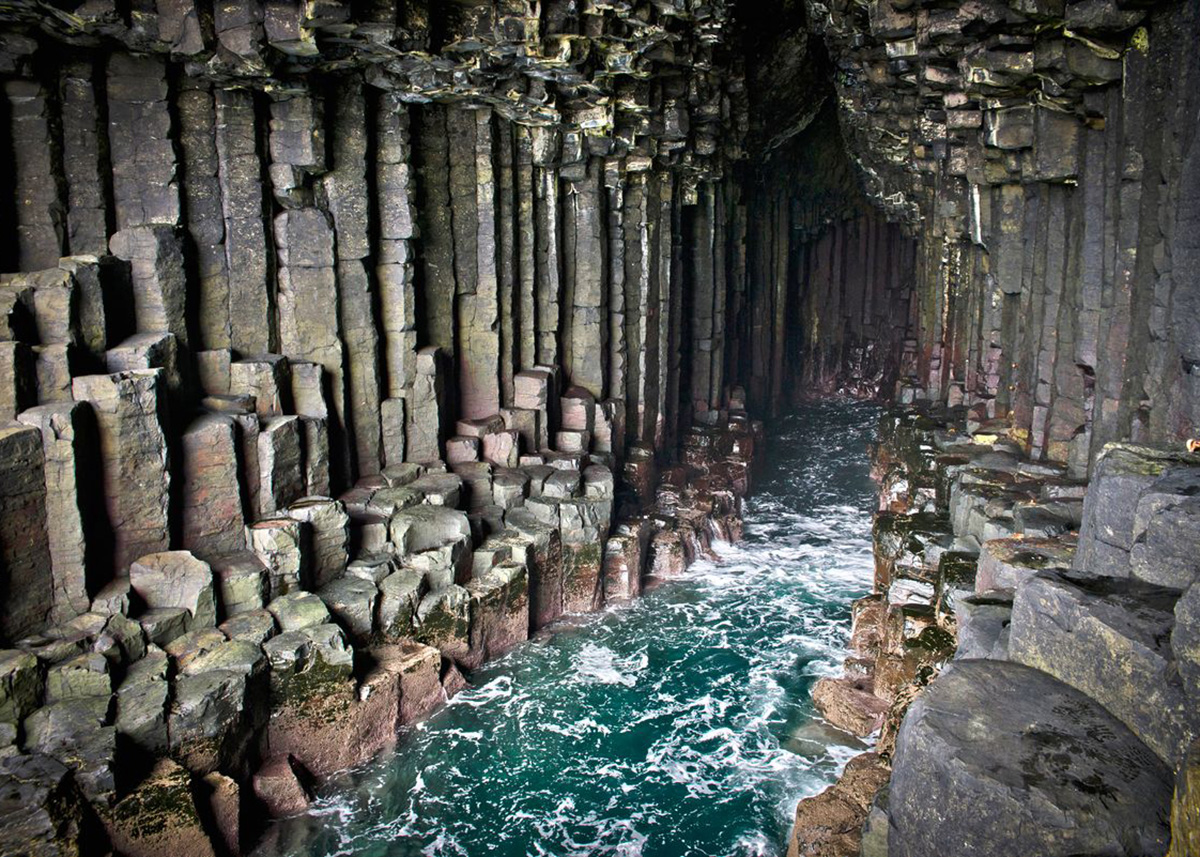
4 – Finn McCool, Fingal’s Cave, Staffa
Fingal’s Cave, on Staffa in Scotland’s Inner Hebrides, is famed for its hexagonal basalt columns and natural acoustics.
Folklore connects the cave to the Irish giant Finn McCool, hero of the Giant’s Causeway legend, who supposedly built a bridge of stepping stones across the sea to Scotland.
Measuring about 72 feet high and 270 feet deep, its arched roof and the rhythmic crashing of Atlantic waves give it remarkable, almost cathedral-like acoustics.
The cave’s Gaelic name, “An Uamh Bhin,” means “The Melodious Cave,” and its inspiring composers including Felix Mendelssohn.
How to visit Fingal’s Cave, Staffa
> Visit Fingal’s Cave with Staffa Tours
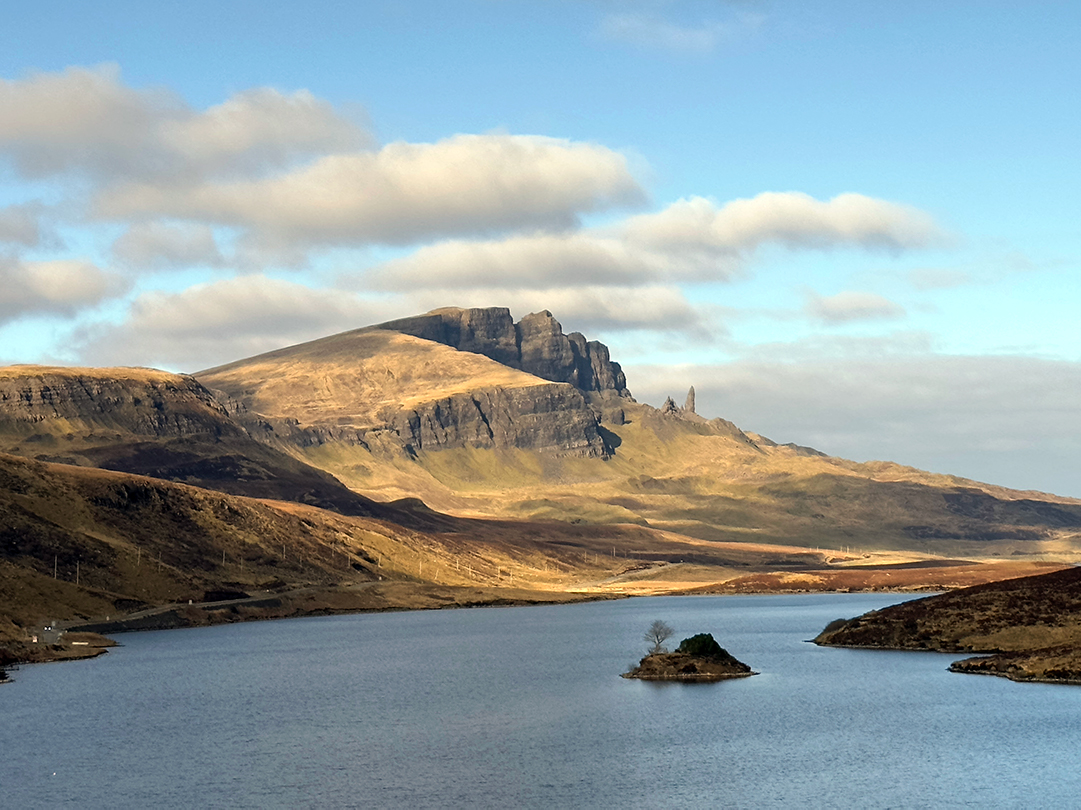
5. The Old Man of Storr, Isle of Skye
The Old Man of Storr, on the Isle of Skye in Scotland, is a dramatic 50-metre pinnacle of rock formed by ancient landslides, and is part of the Trotternish Ridge.
It’s one of Scotland’s most photographed landscapes. Folklore says the “Old Man” was a giant turned to stone, either by the sun’s rays or in grief after burying his wife.
Another tale claims the stones are his thumb protruding from the earth. Hikers can climb the steep path for sweeping views over the Sound of Raasay.
How to visit the Old Man of Storr
- The Old Man is on the Isle of Skye
- To visit hike the 3 mile / 2 hour circuit to view the Old Man of Storr. There is also a great viewpoint of the Storr at Loch Fada.
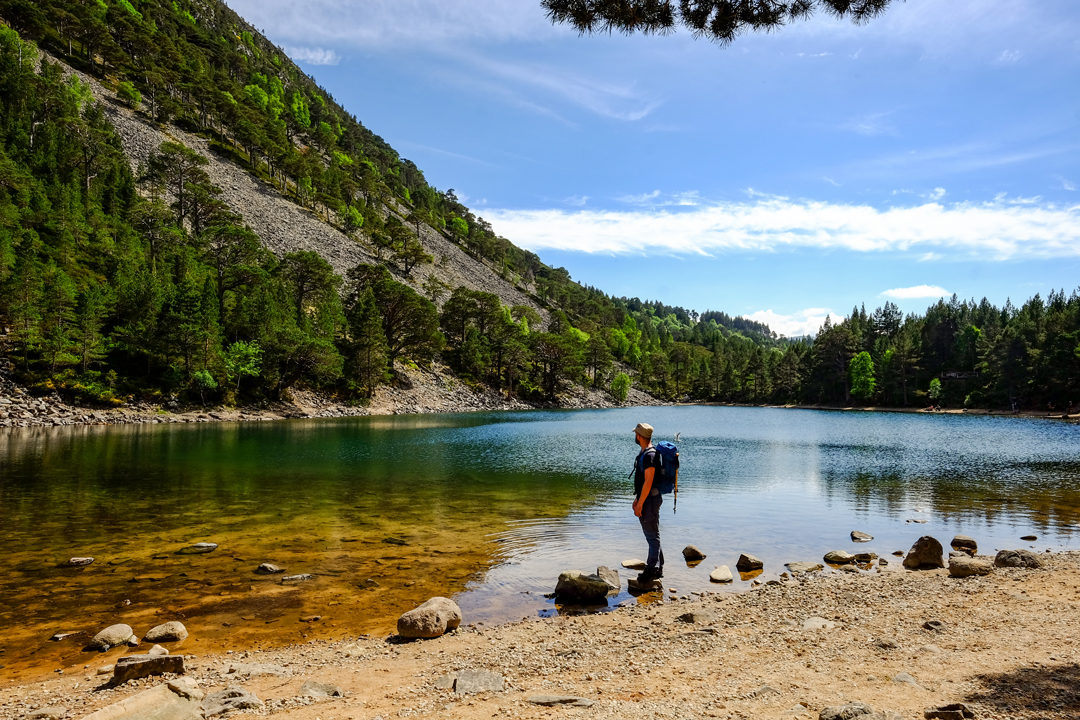
6. Lochan Uaine, the green lochan, Cairngorms
Deep in the heart of the ancient Glenmore Forest and surrounded by huge Caledonian pines is the beautiful Lochan Uaine – where it is said the waters get their green hue from the local fairies washing their clothes in it.
As you explore the path up to the loch keep an eye on the crags above you, for the fairies are most likely to appear on Sithean Dubh da Choimhead (the black fairy hill of the two outlooks) where they keep a watch over the National Park…
How to visit the fairies at the Lochan Uaine
- The 3.7 miles / 6 km walk up to Lochan Uaine is a popular walk for families. If you are looking for a more strenuous walk, hike up to the Ryvoan Pass. Walk Lochan Uaine
Did you know that Big Donald, the King of the Fairies also lives at Loch Morlich – said to protect the landscapes and wild animals which live around this beautiful loch. Do you dare to provoke him?
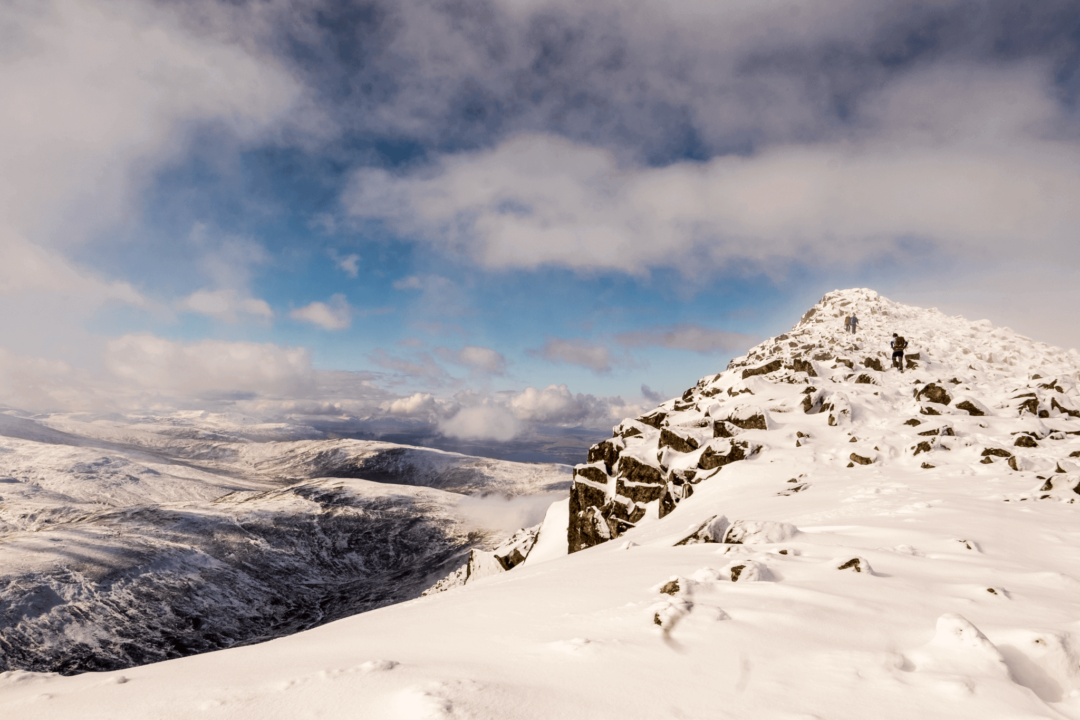
7. The Cailleach Bheur, Schiehallion
Schiehallion is arguably the most ‘mystical’ of all the Scottish Munros – its name means ‘Fairy Hill of the Caledonians’ .
Otherwise known as the ‘constant storm’ due to the often changeable weather conditions on its slopes, it is said to be home to the Cailleach Bheur or ‘the Queen of Winter’.
The Cailleach Bheur is an ancient hag-goddess who first shaped the mountains lochs of Scotland with a hammer, before making her home amongst the boulders atop Schiehallion (and occasionally Ben Nevis) from which she would control the storms, frost, and harsh weather of winter.
Each year, she battles the spring and summer deity ‘Brìghde’ for control of Scotland’s seasons – which is why you will find the weather rather unpredictable in spring and autumn!
How to climb Schiehallion
- Read more: How to climb Schiehallion
8. The Big Grey Man of Ben Macdui
Said to haunt the Cairngorms’ highest peak, Ben Macdui, descriptions of the Am Fear Liath Mòr vary from a tall, shadowy giant to an eerie presence.
Mountain climbers have long reported reported feeling dread, hearing strange footsteps in the gravel, and ghostly figures in the mist and fog – many of which could be put down to seeing otherworldly broken spectres.
> How to visit the Cairngorm’s National Park
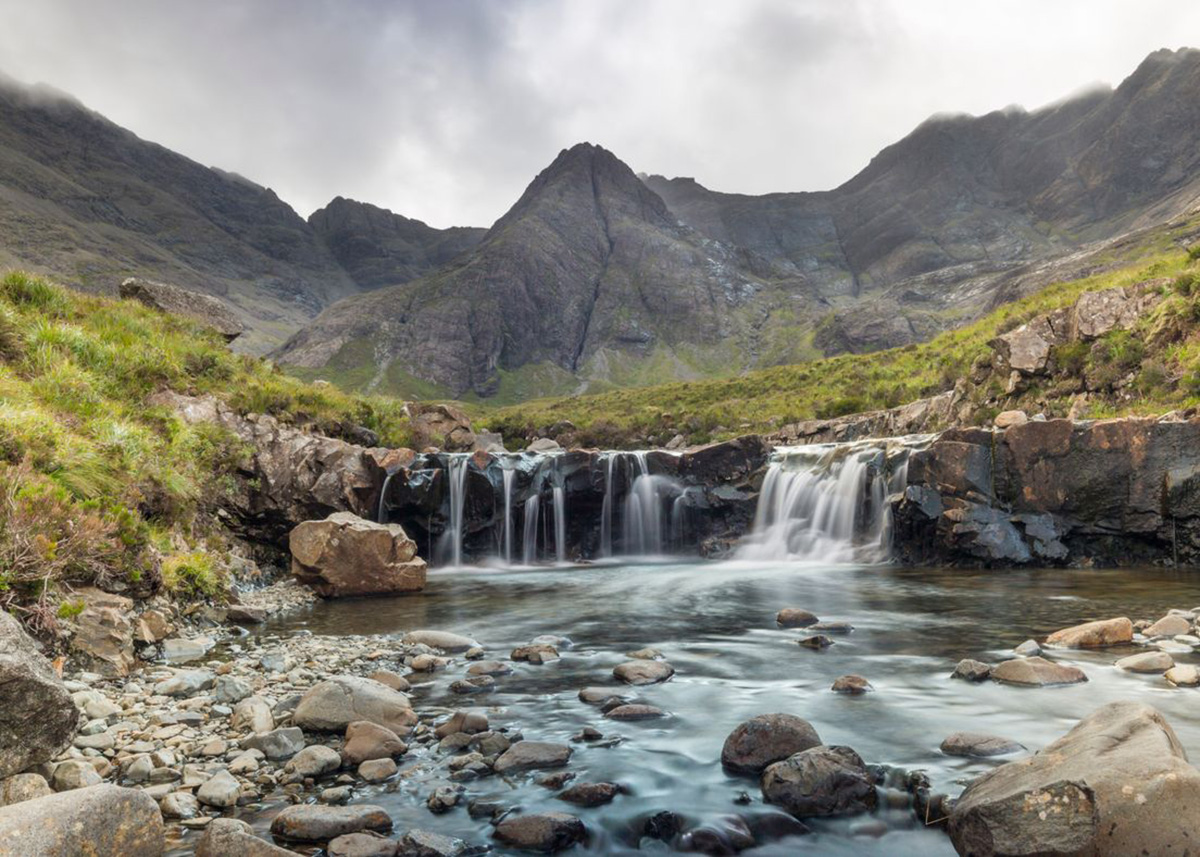
9. Fairy Glen and the Fairy Pools. Isle of Skye
It is no wonder the mystical Isle of Skye is home to tales of fairies and the places they inhabit. Two of the most famous are the Fairy Pools and Fairy Glen, now both incredibly popular tourist attractions.
The Fairy Pools on the Isle of Skye are a series of clear waterfalls and crystal clear turquoise rock pools formed by streams flowing from the Black Cuillin mountains – and are said to be a bathing spot for fairies.
The Fairy Glen is a miniature landscape of glens, lochans and castles – where you could quite believe fairies make their home.
> Visit the Isle of Skye.
10. Doon Hill & Fairy Knowe, Aberfoyle
Doon hill sits on the outskirts of Trossach’s village Aberfoyle and is linked to one of my favourite stories of fairy folk in Scotland.
The Reverend Robert Kirk, who was born in Aberfoyle, wrote a book which revealed the secrets of the fairies, witchcraft and ghosts in the Scottish Highlands.
Before it was published, the Reverand died, atop Doon Hill, but legend has it that in revenge for the book, the fairies kidnapped the Reverend, entrapping him in a Scot’s Pine at the top of the hill to become the Chaplain to the Fairy Queen.
The fairies left a changeling in his place – who is now buried in the graveyard in Aberfoyle.
The book was posthumously published by Scottish author Walter Scott in 1815 under the title The Secret Commonwealth.
At the top of the hill, the Scots Pine still remains, and today visitors tie clooties – ribbons, rags and charms, hoping that the clooties will remove illnesses from loved ones – as the rags rot, so will the illnesses.
Visit Doon Hill.
Which is your favourite Scottish myth or legend?
Love from Scotland x
